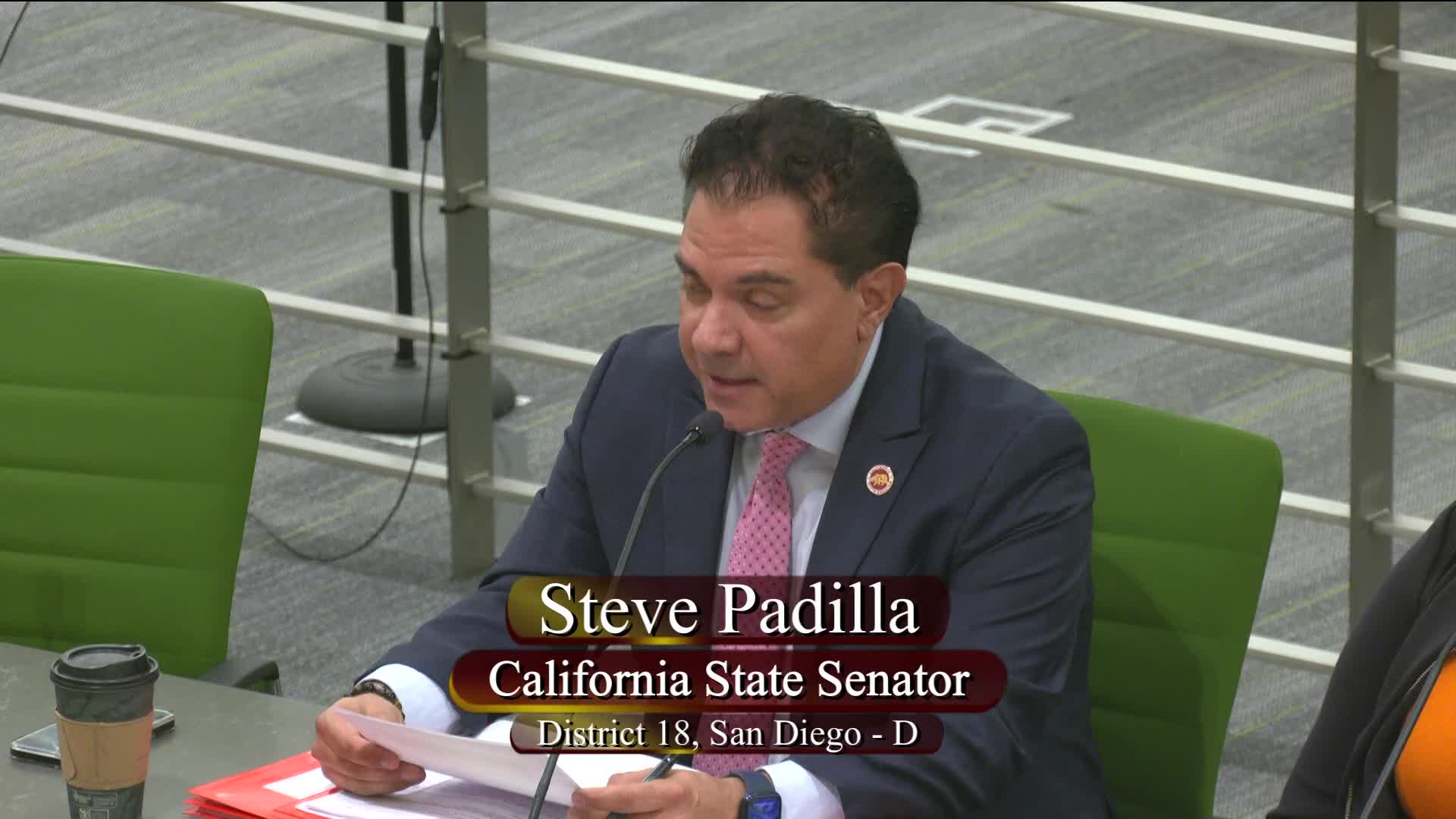California lawmakers endorse SB 638 to enhance education and workforce development coordination
July 02, 2025 | California State Assembly, House, Legislative, California
This article was created by AI summarizing key points discussed. AI makes mistakes, so for full details and context, please refer to the video of the full meeting. Please report any errors so we can fix them. Report an error »

In a recent meeting of the California State Assembly's Education Committee, lawmakers discussed the pressing need for reform in the state's education and workforce development systems. Central to the discussions was Senate Bill 638, aimed at creating a coordinating body to streamline educational pathways and improve access to opportunities for all Californians, particularly those pursuing nontraditional routes.
The bill's proponents highlighted alarming statistics from a recent Public Policy Institute of California (PPIC) survey, which revealed that 70% of Californians believe their children will be worse off financially than they are. Additionally, 60% feel that achieving the American dream is more challenging in California than in other states. These sentiments underscore a growing concern that opportunities are diminishing for many families, particularly in historically disadvantaged communities.
Key issues identified during the meeting included the disjointed nature of California's education and workforce systems, which often fail to support those not on traditional academic paths. The current system, with its fragmented funding and varied requirements, poses significant barriers for low-income and rural communities. As a result, many individuals are left without the necessary skills to participate effectively in the economy, contributing to a widening income gap.
The proposed Middle Class Pipeline Project, as outlined in SB 638, aims to address these disparities by fostering better coordination among various educational and workforce programs. This initiative seeks to inject resources into low-income regions, enabling local education agencies to develop career technical education pathways that align with the needs of the economy.
Supporters of the bill, including representatives from California Competes and the EDGE Coalition, emphasized the importance of collaboration among business, labor, and education sectors to create a unified system that benefits all Californians. They argued that the lack of a higher education coordinating entity in California has left students and families navigating a complex web of services without adequate support.
The committee's discussions also touched on the projected shortfall of 2 million college-educated workers by 2030, highlighting the urgent need for a coordinated approach to workforce development. By establishing a statewide coordinating entity, SB 638 aims to provide actionable labor market information and facilitate smoother transitions between education and employment.
As the committee moved to vote on the bill, there was a sense of optimism about the potential for meaningful change. The passage of SB 638 represents a critical step toward addressing the systemic challenges facing California's education and workforce systems, with the hope of creating a more equitable future for all residents. The bill now advances to the higher education committee for further consideration, marking a significant moment in the ongoing effort to rebuild pathways to the California dream.
The bill's proponents highlighted alarming statistics from a recent Public Policy Institute of California (PPIC) survey, which revealed that 70% of Californians believe their children will be worse off financially than they are. Additionally, 60% feel that achieving the American dream is more challenging in California than in other states. These sentiments underscore a growing concern that opportunities are diminishing for many families, particularly in historically disadvantaged communities.
Key issues identified during the meeting included the disjointed nature of California's education and workforce systems, which often fail to support those not on traditional academic paths. The current system, with its fragmented funding and varied requirements, poses significant barriers for low-income and rural communities. As a result, many individuals are left without the necessary skills to participate effectively in the economy, contributing to a widening income gap.
The proposed Middle Class Pipeline Project, as outlined in SB 638, aims to address these disparities by fostering better coordination among various educational and workforce programs. This initiative seeks to inject resources into low-income regions, enabling local education agencies to develop career technical education pathways that align with the needs of the economy.
Supporters of the bill, including representatives from California Competes and the EDGE Coalition, emphasized the importance of collaboration among business, labor, and education sectors to create a unified system that benefits all Californians. They argued that the lack of a higher education coordinating entity in California has left students and families navigating a complex web of services without adequate support.
The committee's discussions also touched on the projected shortfall of 2 million college-educated workers by 2030, highlighting the urgent need for a coordinated approach to workforce development. By establishing a statewide coordinating entity, SB 638 aims to provide actionable labor market information and facilitate smoother transitions between education and employment.
As the committee moved to vote on the bill, there was a sense of optimism about the potential for meaningful change. The passage of SB 638 represents a critical step toward addressing the systemic challenges facing California's education and workforce systems, with the hope of creating a more equitable future for all residents. The bill now advances to the higher education committee for further consideration, marking a significant moment in the ongoing effort to rebuild pathways to the California dream.
View full meeting
This article is based on a recent meeting—watch the full video and explore the complete transcript for deeper insights into the discussion.
View full meeting
